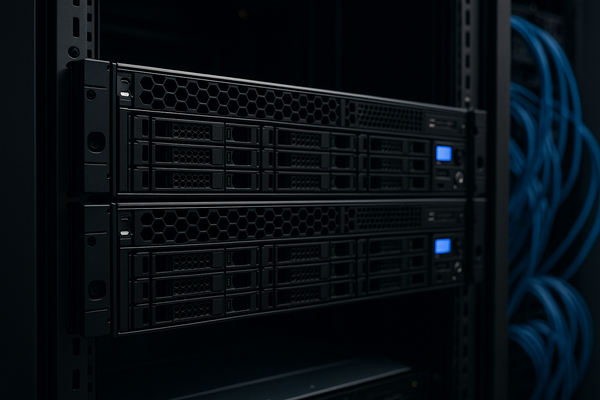
Oracle (NYSE:ORCL) reported surprisingly thin AI-cloud margins, rattling markets and prompting a broad tech pullback. The story matters now because it exposes near-term profit pressures in AI services while larger capacity commitments keep long-term infrastructure demand intact. In the short term, investors are reassessing cloud margins and vendor pricing power. Over the long term, multi-year AI data-center buildouts still underpin chip and server makers. The fallout spans the U.S. and Europe where hyperscalers drive demand, and Asia where supply chains and chipmakers respond — echoing past cycles of capacity catch-up after hype-driven ramps.
Market Pulse Check
Trading sentiment turned cautious after a report on Oracle’s cloud margins. Institutional flows rotated out of select AI-exposed names and into defensive tech and dividend plays. Retail volume spiked in momentum names while ETFs tied to AI infrastructure saw both inflows and redemptions on the same session.
Two contrasting moves framed the session. Oracle (NYSE:ORCL) was penalized after clients and investors focused on slimmer profits from AI rentals. Meanwhile, Dell (NYSE:DELL) rallied as management lifted long-term growth targets on server demand, signaling real-time order strength for AI systems.
Analyst Convictions — Upgrades, Downgrades and the Valuation Debate
Analysts split between re-rating winners and trimming exposure. HSBC upgraded Autodesk (NASDAQ:ADSK) to Buy, citing accelerating AI adoption and capex tailwinds. By contrast, some firms scaled back AI-exposed names after the Oracle margins disclosure highlighted compression risks.
- Upgrade case: Autodesk (NASDAQ:ADSK) — analyst upgrade emphasizes durable software pricing and steady enterprise budgets for design tools.
- Re-rating risk: Oracle (NYSE:ORCL) — margin scrutiny has analysts re-evaluating embedded profitability for AI services.
- Dividend/defensive interest: Broadcom (NASDAQ:AVGO) and Texas Instruments (NASDAQ:TXN) drew attention as profitable dividend stocks with infrastructure exposure.
Valuation gaps emerged. Companies with strong cash flows and steady guidance traded firmer despite headline AI volatility. High-growth names with thin near-term profitability saw the sharpest reactions. Historically, markets have punished earnings misses more than capacity announcements — this session followed that pattern.
Risk Events vs. Expansion — Litigation, Regulatory Scrutiny and Capacity Bets
Risk headlines coexisted with expansion stories. AppLovin (NASDAQ:APP) faced an SEC probe over data practices but saw a rapid rebound after investors judged the initial sell-off overdone. Qualcomm (NASDAQ:QCOM) defended its supply policy in tribunal hearings, a legal overhang that contrasts with its strategic supply deals and AI-capable processors.
On the expansion side, Amkor (NASDAQ:AMKR) doubled down on U.S. capacity with a $7 billion Arizona campus to scale advanced packaging — a direct, on-the-ground boost to domestic semiconductor throughput. That contrasts with companies losing short-term sentiment over regulatory or litigation headlines.
- Legal/regulatory: AppLovin (NASDAQ:APP) — short-lived volatility tied to probe headlines.
- Operational expansion: Amkor (NASDAQ:AMKR) — large-capex project supporting domestic supply chain and job creation.
- Market friction: Qualcomm (NASDAQ:QCOM) tribunal case — legal defense amid ongoing commercial ties with major handset makers.
Leadership and Fundamentals — CEO Moves, Deals and Execution Gaps
Leadership signals diverged from fundamentals. Dell’s (NYSE:DELL) management raised long-term outlooks, citing visible AI server demand and boosting investor confidence. By contrast, IBM (NYSE:IBM) made a strategic AI partnership with Anthropic to embed Claude into enterprise tools; the announcement lifted the stock but also raised questions about execution and product integration timelines.
Meanwhile, AMD (NASDAQ:AMD) landed a high-profile OpenAI-linked supply deal that shifted narrative about supply concentration and secondary sourcing — a potential structural win if execution holds. Nvidia (NASDAQ:NVDA) continued to command the infrastructure narrative, including financing arrangements tied to customers’ chip purchases, underlining its central role in the compute stack.
Investor Sentiment
Institutional and retail reactions diverged. Institutions showed cautious rotation: trimming some high-multiple AI exposure while adding shares of names with visible cash flow or upgraded ratings. Retail traders chased winners on momentum and dip buys in beaten-down names. ETF flows were mixed, with AI-focused funds netting both inflows and outflows as performance dispersion widened.
Valuation disconnects stood out. A handful of companies posted strong fundamentals but lagged in price due to headline risk. Conversely, some high-beta AI plays retained lofty multiples backed more by narrative than near-term earnings, a pattern familiar from prior tech cycles.
Investor Signals Ahead
Contrasting forces — earnings and margin scrutiny versus multi-year hardware commitments — are reshaping near-term leadership. Short-term market action will likely be driven by margin disclosures and analyst revisions. In the medium term, capacity investments from server, packaging, and chip suppliers underpin demand for infrastructure makers.
Watch how investors price the divide between legally or regulation-driven risk and companies delivering tangible expansion. That separation may reorganize leadership among names that gain real orders and those that rely mainly on expectation. For now, the market’s reaction favors clarity of revenue and margins over pure narrative.












